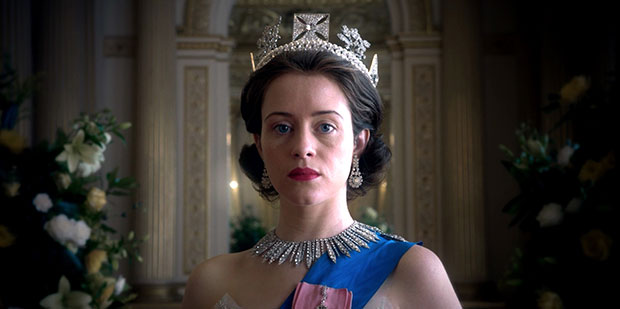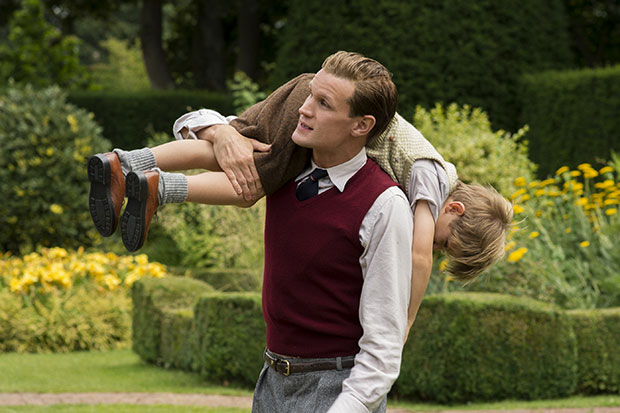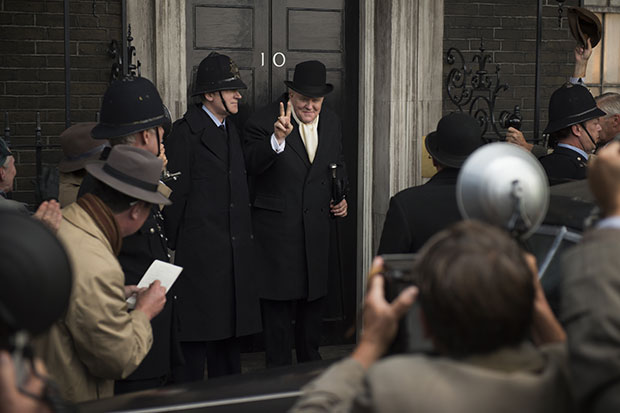Seen on TV: The Crown (series 1 & 2)
Published in Issue 2 (March/April 2018), Reviews, Volume 26Netflix, 2016–17
By John Gibney
Does the British head of state sit down to watch The Crown? What was interpreted as an exceptionally subtle reference in Queen Elizabeth II’s annual Christmas message to an incident depicted in the second series of what could be said (no pun intended) to be the jewel in the crown of Netflix’s in-house productions led to a degree of excitable media speculation that she had indeed seen it. On the face of it, this is a trivial issue in the grand scheme of things. Yet it raises a question that lurks around any dramatisation of the past: what would the subjects of any historical fiction think of how they are depicted? Even if Queen Elizabeth has seen it, it is unlikely that she, or any members of the British royal family, will offer any public commentary on it. The first series of The Crown was released last year to considerable fanfare, not least because, with a budget said to be in the region of $100 million, this was apparently one of the most expensive television dramas ever produced, if not the most expensive. Looking ahead, that figure could yet be multiplied by a factor of six. The Crown is the brainchild of the English scriptwriter and playwright Peter Morgan, who has a well-established track record in the development of drama based on recent history (including, pertinently, The Queen in 2006). This is a more ambitious project by far: The Crown is intended to consist of six series of ten episodes each, with the cast changing every two series to mirror the aging of its protagonists. Given that Claire Foy and Matt Smith have finished their shifts as Queen Elizabeth and Prince Philip, it makes sense to take stock of the series at this juncture.

Above: Claire Foy plays Queen Elizabeth II in both series as a vaguely reluctant monarch.

Above: Matt Smith’s Prince Philip is depicted as a man in a man’s world whose playboy inclinations are increasingly hemmed in by the restraints of his role.
Between them, the two series have a great deal to recommend them. Both are extremely well made, lavishly produced, visually impressive, well written, well paced and well acted (with John Lithgow providing a surprisingly effective turn as Winston Churchill). They also offer a combination that is surely attractive to writers and viewers: a family saga taking place against the backdrop of profound social change, whose main protagonist just happens to be the longest-serving monarch in British history. The first series is the more finely poised of the two, starting in a manner that points to the blending of the public and the private: the marriage of Elizabeth and Philip. The narrative arc of the first series revolves around her coronation and her gradual easing into her role; Foy plays Elizabeth in both series as a vaguely reluctant monarch, while Smith’s Prince Philip is depicted as a man in a man’s world whose playboy inclinations are increasingly hemmed in by the restraints of his role (though one looks in vain for dramatic reflections of some of his, shall we say, better-known public utterances over the years). The queen’s views on a wide range of matters remain opaque, with only vague hints made in public. This may contribute to the affection in which she is held: many of her subjects may well like the idea of monarchy, but to have an appropriately non-partisan head of state (at least explicitly) is surely a bonus. It is a quality that Foy works into her portrayal, which makes the occasional flash of her true opinions more telling.

John Lithgow providing a surprisingly effective turn as Winston Churchill.
Such a public persona also ensures that a dramatist such as Morgan has a free hand with which to work. And this brings us to the crucial point: The Crown is a fiction. It may indeed be rooted in fact, and much media commentary on it has sought to fact-check it over issues such as the relationship between the duke of Windsor (formerly Edward VIII, played here by Alex Jennings) and the Nazis (though a montage of contemporary photos at the end of the relevant episode speaks for itself). But it is a fiction. By definition, it should not—cannot—be a reliable guide to recent British history. But the relationship between fiction and empirical history is more fluid than that; imaginative depictions can surely help to illuminate reality as historians seek to represent it, by providing a speculative model of human agency. One gets the sense that The Crown’s creators do hope that it may serve as a commentary on that recent past. If that is the case, then the first series is the more successful of the two, tracking the accession of a new monarch against a backdrop of change. The second series is perhaps less polished and is more episodic, with a trajectory defined increasingly by the personal; major events such as the Suez Crisis of 1956 and the Profumo affair of 1963, with which it concludes, essentially serve as the backdrop.
What does The Crown offer specifically to an Irish audience? The significance of the British monarchy to the island of Ireland past and present does not need to be spelled out. Ireland warrants only a handful of incidental mentions and Northern Ireland acts as a very brief backdrop on one occasion. This is inevitable, given the era covered by the two series to date. Northern Ireland is bound to hove into view as future series reach the 1970s. One wonders whether it will dramatise the allegation that in 1979, in conversation with the mayor of Chicago, Princess Margaret described the Irish as ‘pigs’. Considering that this (if it was indeed true) came months after the murder by the IRA of both her and Queen Elizabeth’s uncle Louis, Lord Mountbatten, who has been a regular feature of the first two series, it is tempting to think that dramatic requirements might dictate its inclusion. And looking even further ahead, might the symbolism of the Queen’s state visit to Ireland in 2011, complete with wreath laid to honour those who died in the struggle for Irish independence, offer a potential coda for the entire project? Who knows? And at this stage, why care? The Crown as it stands is a very impressive and surprisingly enjoyable drama (even for those of us who despised the rose-tinted dross of Downton Abbey) and succeeds on that front alone.
John Gibney is DFAT100 project co-ordinator with the Royal Irish Academy’s Documents on Irish Foreign Policy project.
















